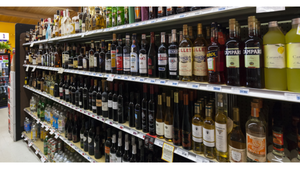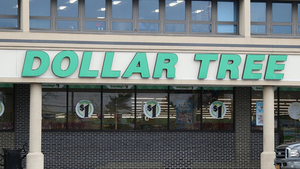Nutrition on ice
Frozen fruit and vegetables offer healthy sales opportunities for retailers.
January 1, 2018
Frozen fruit and vegetables offer healthy sales opportunities for retailers. The produce department attracts hordes of customers with its brightly colored fruit and endless rows of green leafy vegetables. There is no denying the allure of a perfectly ripe tomato or a just-picked peach. However, frozen produce—and frozen fruit in particular—is gaining ground among consumers who recognize its equivalent, or sometimes higher, nutritional value, longer shelf life and convenience as perks when compared to fresh. With the support of celebrity chefs offering recipes tailored to frozen produce, retailers who give this section some attention could be sitting on a gold mine. “The frozen fruit category is doing phenomenally well, which is nice since that is not usually the case in the frozen department,” says Christine Herrera, vice president of marketing for Sunrise Growers~Frozsun Foods (Sunrise Growers), based in Placentia, Calif. “Total category growth has been up 8% and 4% in dollar and unit sales, respectively. This growth is driven by an increase in repeat and more frequent purchases. More people are trying it and are really satisfied so they are returning.” The main driver of the section is the convenience factor. That, combined with the health benefits, is providing the category with a boost, agree industry observers. The argument that fresh fruit loses its nutritional value as it sits out does not apply to frozen fruit, which is frozen immediately after harvest. Wild blueberries, in particular, are typically frozen within 24 hours, says Mike Collins, vice president of Food and Wellness Group (FWG), based in Portland, Me. He says the process locks in freshness and the nutritional value of anti-oxidants during their peak. Observers believe that retailers, and subsequently consumers, should view frozen fruit and vegetables as a solution to meeting the USDA’s requirements. Many people do not meet the suggested daily servings fruit and vegetable due to high priced-fresh produce and the inconvenience of its short shelf life. “With frozen fruit, the quality is always there,” says Collins. “They are quick and easy to prepare, do not degrade over time, offer four-season availability and cater to a broad variety of tastes and textures. Its an excellent value for consumers who want to improve their diets while making the most of their food dollar and their time.” The market sees a natural lift in frozen fruit in the winter months, when fresh is more scare and expensive, but it has become a mainstay year-round for its consistency and convenience—both for consumers and retailers. Retailers always know they are going to get high-quality fruit that can be sold at a consistent price: “Fresh fluctuates,” says Collins. “When the fruit is in season it may be a bit less expensive, but overall frozen is more affordable.” Proper placement is key One of the first things retailers should consider is the placement of frozen fruits and vegetables. Frozen fruit tend to sit near the desserts and whipped toppings, portraying a less healthy image. Manufacturers recommend that retailers display frozen fruits near the frozen vegetables, creating a produce section within the freezer department. “If retailers gave the frozen section the same attention as fresh produce, such as creating an aisle of just frozen healthy foods, it would do a lot better. People would develop the same mindset for shopping the frozen aisle as they do in the produce department,” says Collins, who refers to retailers as “the architects of choice” with regards to product placement. Herrera adds placing frozen fruit alongside the steamable vegetables “would allow retailers to capture impulse buys since it’s the same shopper opening the value-added frozen vegetable door.” Reconfiguring the frozen aisles is not an easy project, say observers. There are quicker tactics retailers can use to call out frozen fruit in the aisles. Simple point-of-sale marketing and offering in-store demos and recipe giveaways are highly effective ways. People are always looking for new ways to get fruit into their diet, says Herrera. “Thirty percent of shoppers already use frozen fruit and their feedback is that they would like to know more ways.” Sunrise Growers’ latest product focus is its line of frozen fruit smoothies. In February the company added three flavors to its line of Pure Fruit Smoothies—Strawberry/Banana Splash, Wild Berry Bliss and Citrus Blast—that contain almost double the amount of fruit and are 100% natural. Its important for suppliers and retailers to promote the health message on their packaging, website and other promotional materials, says Herrera, noting that such communication motivates consumers to purchase frozen fruit products. Currently, Sunrise Growers is looking at flavors that appeal to the Hispanic market. Overall, the Hispanic market over indexes on fruit consumption in all forms, says Herrera. “They are coveted fruit shoppers. We are working with some flavors, such as tropical varieties, with the demographic in mind.” The company is also looking towards adding more wild blueberries to its varieties and creating value-added products that include Greek yogurt. Creating the mindset to eat healthier begins outside the store, say observers. The FWG turns to celebrity chefs and book authors to market the benefits of wild blueberries. Author Allison Fishman makes liberal use of frozen fruit and vegetables, so the group teamed up with her to help her promote her new book. Additional chefs from the group’s Portland, Maine, community and professionals from other walks of life will be featured on a new video that will be promoted on the website soon. Many of the chefs the FWG works with prefer frozen fruit, especially wild blueberries, to fresh. They promote the freezer as a “healthy place” and discuss the economic considerations about affordability and being less wasteful. “Many fruits and vegetables perform wonderfully in the freezer,” says Collins. “Wild blueberries are one of them; they have a lower water content then cultivated blueberries that holds up well in the freezing process. We like to say Mother Nature put them on earth to be frozen.” The FWG focuses their research around health. Positive research and results feeds the campaign for healthy frozen fruit. According to Collins, the entire anti-oxidant story started with research into wild blueberries, consequently bringing it to the forefront of the health arena. “Wild blueberries have double the anti-oxidant capacity than their cultivated counterparts,” he adds.
About the Author
You May Also Like




